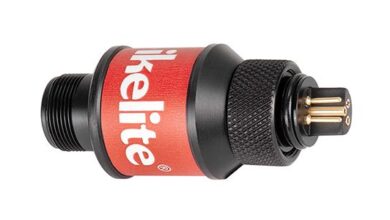News and Analysis: The OM-1 Mark II and Two New Lenses Are Announced

OM Digital Solutions has announced an upgrade to their popular OM-1. The Mark II version has the same sensor and processor, but the development has concentrated on a much larger memory and buffer, improved dials, and a range of new features that will appeal especially to wildlife and landscape photographers.
I’ve been lucky enough to have a loaned, pre-release version of the OM-1 Mark II camera and the new OM SYSTEM M.Zuiko Digital ED 150-600mm f/5-6.3 IS lens for the last couple of months. I will write a full review of them soon. In the meantime, here’s the news about the release and my analysis of what it means to photographers.

The OM-1’s Major Improvements
AI Subject Detection
The camera has advanced AI Subject Detection autofocus performance, which also now includes humans. I’ll talk about it more in the review, but the already good bird detection has improved enormously, locking the autofocus onto small birds partially hidden behind twigs at over 30 yards (27 meters) distance, as illustrated in the following shot. This photo is straight out of the camera, using the OM-1 Mark II and the new 150-600mm at 600mm (1200mm full frame equivalent), ISO 400, 1/500th second, f/6.3.
The other AI Detection subjects are Pets, Cars, Aircraft and Trains. All the subject detection options are far more easily accessed in the Super Control Panel.
Pro Capture Mode (Buffering Images Before You Fully Press the Shutter Button)
Its Pro Capture mode has blackout-free sequential shooting. It will record 120 raw frames per second in single autofocus and buffer up to 213 frames. That’s nearly two seconds of buffered images before you press the shutter button. With continuous autofocus, pro-capture records 50 raw frames per second and will buffer 256 images before you fully depress the shutter button, that’s five seconds of buffered images, which means you should never miss a shot.
Image Stabilization
All photographers will be pleased to see that the OM-1 Mark II now features 8.5 stops of image stabilization.
Live Neutral Density and Graduated Neutral Density Filters
For landscape photographers in particular, the new camera’s built-in LiveND filter now goes up to seven stops, ND128. Furthermore, there is also a new LiveGND (Live Graduated Neutral Density) filter, with both adjustable angles and feathering. There are 2-, 4-, and 8-stops of graduated filter built into the camera.
High-Resolution Mode
The high resolution (Highres Shot) feature is up to 80 MP and produces 14-bit raw images.
The Camera’s Body
The body also sports new rubberized dials and some minor menu changes to accommodate the new features.
The camera, of course, has the IP53 weatherproofing. It’s also shown to be freezeproof. It can be stored at -20°C (-4°F) and used at -10°C (14°F), although I was happily using it at -30°C (-22° F) in Finland with no issues. It will also work at 40°C (104°F), will store at 60°C (140°F), and can also be used at 90% humidity.
Analysis: Who is the OM1 Mark II for?
I’ve said it before, the success of the OM System is good news for the entire industry because their products are innovative and their research and development of new features inevitably bleed into other brands. So, it’s great to see that the system is still persuing that innovation.
As is often the case with some consecutive camera releases from all brands, this camera is an evolutionary step forward from its predecessor. But are the changes there enough to encourage photographers to upgrade? For bird and wildlife photographers, I believe it will be. The AI subject detection is so much better. The original OM-1 was no slouch, but the Mark II takes it to a whole new level. Especially so with the release of the new telephoto zoom lens.
Similarly, the extra half-stop of IS will be appealing to bird photographers too. As wildlife photography is something I am getting more and more into, I have found this camera makes a big difference over the previous model. Moreover, for landscape photographers like me who want to travel light, being able to leave the ND Grad filters behind, and that extra half-stop of Live ND often makes my tripods redundant.
The OM-1 Mark II’s full specifications can be found by clicking here.
The camera is available for pre-order. Look out for special lens combinations offers.
The OM SYSTEM M.Zuiko Digital ED 150-600mm f/5-6.3 IS Lens
Also announced is a new lens. It took a lot of people by surprise as there was speculation the lens was going to be a 50-200mm f/2.8 lens, which is on the OM System lens roadmap.
The new OM SYSTEM M.Zuiko Digital ED 150-600mm f/5-6.3 IS Lens is a high-performance super-zoom lens. It features image stabilization synchronized with the camera’s in-body IS. It has a fluorine coating and its IPX1 weather sealing means it is protected against condensation and vertically dripping water.
The lens has a focus limiter switch, which speeds up focusing. There’s a switch that locks the lens or allows the zoom to run either freely or with some resistance. It also has two pre-focussing buttons that will set the focus to a distance that you have chosen.
There’s also a permanently attached, rotating tripod collar.
It has 25 elements in 15 groups, including four Super ED and two ED elements for reducing color fringing and chromatic aberrations.
The lens is not a PRO lens. However, I have been trying it out and the image quality is outstandingly good. I think this will especially appeal to bird photographers who work in hides. Again, I will be reviewing that later.

Analysis: Don’t Listen to Rumors
By that title, I don’t mean the Fleetwood Mac’s excellent album.
There was some uninformed speculation on a rumors site that this was just a rebranded existing Sigma lens with a Micro Four Thirds mount. Although the focal length and aperture are similar, they clearly aren’t the same lens; the specs are significantly different, including extra lens elements and the much closer minimum focusing distance of 56 cm as opposed to the Sigma lens’ 2,800 cm. OM Digital Solutions says they fully supported the manufacture and bringing to market this lens for the OM System and the Micro Four Thirds standard. Don’t bother listening to rumors, it’s second-hand news.
The super-zoom lens is going to be a winner for ornithologists; a lot of photographers take cameras and long lenses for spotting and cataloging birds. However, initial tests have shown that this has superb image quality and is no doubt a more affordable alternative to the OM SYSTEM M. Zuiko 150-400mm f/4.5 TC 1.25 IS PRO Lens, from which it has inherited some features. With the system’s 2x crop that gives an equivalent field of view of a 1200mm lens on a 35mm camera, this is going to be a big attraction for wildlife photographers.
OM SYSTEM M.Zuiko Digital ED 9-18mm f/4-5.6 II Lens
The other standard lens that’s appeared for the OM System is an OM SYSTEM M.Zuiko Digital ED 9-18mm f/4-5.6 II Lens. This ultrawide redesign appears sleeker than its predecessor. Again, it’s a more affordable alternative to the OM System’s PRO lineup, although in fairness, their top-of-the-range products are better valued than many of the other brand equivalents.
This lens is aimed at landscape photography and is likely to also appeal to architectural photographers and even real estate agents.

Analysis
This lens’ predecessor was an old model and, in design, a hangover from the old Four Thirds lenses. It’s a good sign to see that OMDS has invested in improving its design and performance of an affordable landscape lens, thus meeting the needs of those who can’t buy the PRO glass.
Overall Analysis: What Can We Learn From These Releases
When OM Digital Solutions took over the Olympus brand, the message that came out was that they were going to focus on high-end gear. They seem to be living up to this promise with the release of the OM-1 Mark II and these lenses. The system is very much designed for those in the great outdoors, and the two lenses continue to make wildlife and landscape photography more accessible.
It’s undeniable that the OM System and the legacy brand, Olympus, have been an industry leader in innovative technologies. It’s something that’s continuing with these products. Their unique features, combined with the system’s smaller size and weight, are appealing to people wanting to change to the System for any one of the numerous reasons people are doing so. That is also why the OM-1 camera has started appearing in a top ten selling list recently. The OM-1 Mark II appears to build on this foundation, expanding the existing specifications and giving it some new features.
These products have been in development for some time, and it’s good to see that OMDS is investing heavily in the brand. They have finally moved on, getting shot of the old Olympus name and, in doing so, have also silenced the mistaken doom and gloom trolls that predicted failure when it broke away from Olympus. It’s done that by repeatedly producing successful products and it looks like that trend is continuing.
Of course, there will always be those who want more. Some might say that the OM-1’s upgrade isn’t as big as the difference between the E-M1 Mark III and the original OM-1. Most manufacturers produce smaller upgrades as the development of a completely new camera from scratch is hugely expensive; I was recently told it costs an eight-figure sum to build a camera from scratch. Moreover, the OM-1 has proved to be a superb and popular camera, so building upon it and adding improvements within the same body makes sense. Plus, these improvements are significant.
There might also be those who complain that some of these changes could have been implemented with a firmware update: but they couldn’t. The new camera has a much larger memory to facilitate the new features and greater performance.

Those who photograph wildlife will be attracted by these significant improvements. The bird detection is far better than before and better than many I have tried from other brands, and I’ve tried a lot.
Similarly, landscape photographers will be pleased with the extra Live ND features too, and macro photographers will love that extra half stop of IS. I have yet to test the camera for sports photography, but plan to do so soon and will report back.
If you solely walk around in bright daylight and shoot in P mode, the advancements won’t affect you so much. But, if you are a specialist in any outdoor genre of photography, you are likely to find the upgrade worthwhile.
Apart from photographers upgrading from the OM-1 and the earlier E-M1 models, I can see this camera will also attract even more people who will migrate from other systems or want to use the OM System as an alternative extra in their camera bag. I know a few photographers teetering on the edge of switching, and the new features will tip some, maybe many, of those over the edge.

As an OM System Ambassador, you’ll probably claim I would say all that. But I only took that honorary and unpaid title because I believe in how good the system is. Once again, it has exceeded my expectations and I am sure other OM System users will be as pleased as I am.






